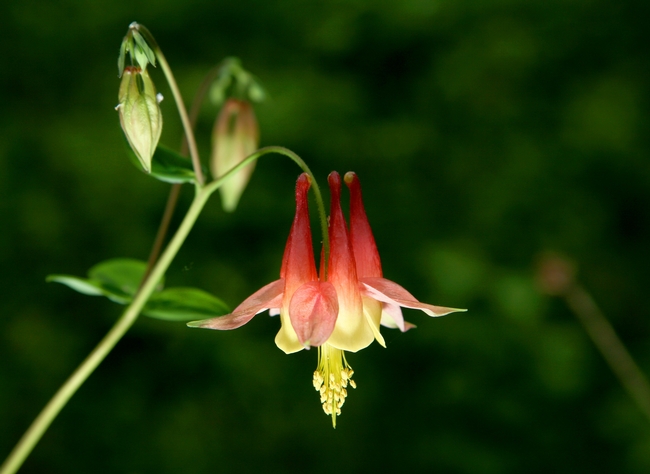By Cindy Weiner, Butte County Master Garderer, July 25, 2014
By this time of year the lush growth and colorful flowers of spring are just a memory. Many California native plants go dormant in the summer, waiting for the fall and winter rains before they grow again. Some plants, like California buckeye, are already losing their leaves. But luckily for the native garden, there are still plenty of plants that thrive and bloom during the hot weather.

One buckwheat native to dry slopes in the mountains of Butte County is sulfur-flowered buckwheat (scientific name Eriogonum umbellatum). It grows one to two feet tall and three feet wide. The flowers are a bright yellow. The leaves are gray-green with whitish undersides.
California buckwheat (Eriogonum fasciculatum) is native to the foothills of southern California and is quite drought-tolerant. It grows one to three feet tall and up to four feet wide. Its needle-like leaves grow in clusters along the stem. The white or pink flowers grow in flat-topped clusters.
St. Catherine's lace (Eriogonum giganteum) is native to the Channel Islands and Baja California. It grows to be a large, rounded woody shrub four to five feet tall and six or more feet wide. Its creamy flowers grow in large flat clusters held above the plant. The leaves are gray-green and felty.
Coyote mint (Monardella villosa) is another summer-blooming perennial that does well in sunny and dry garden settings. It has fragrant dark green foliage; Native Americans used the leaves to make tea. Its showy heads of light purple flowers attract butterflies. With deadheading, coyote mint will continue to bloom for most of the summer. It grows 1-2 feet tall and wide. Cut back the branches in the fall to reduce legginess and to promote denser growth in the spring.

Remember to include summer-bloomers when planting your native garden this fall.